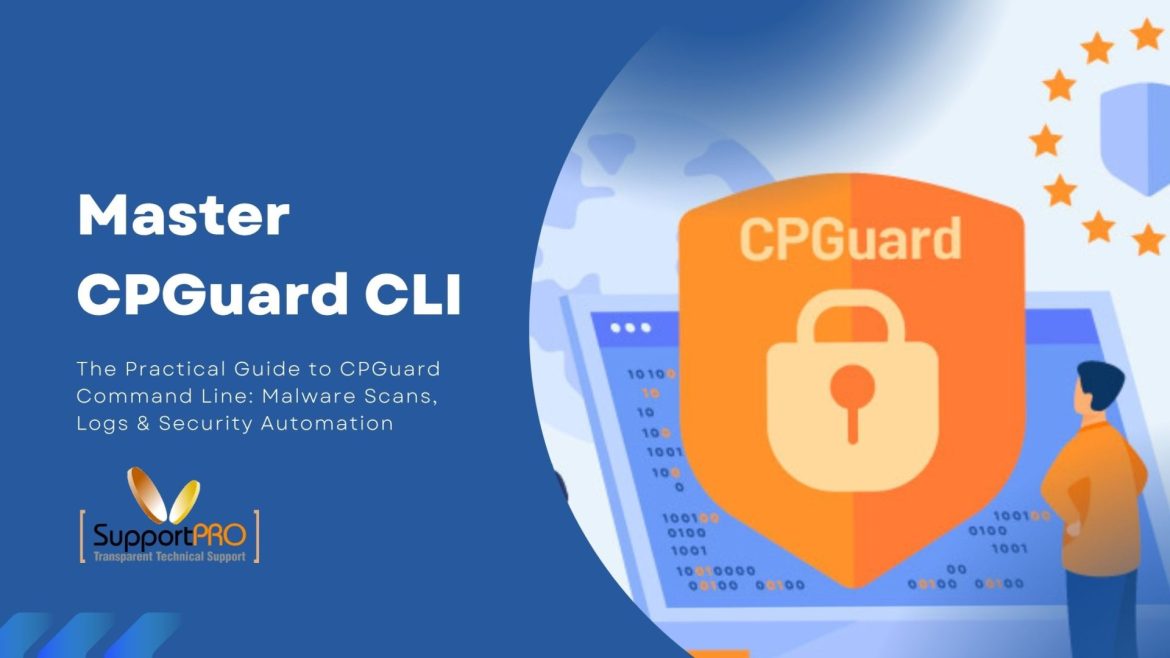If you’ve ever wrangled a server or run your own hosting setup, you already know: security isn’t optional. You need solid protection, and that’s where CPGuard comes in. It’s a tough, feature-packed security suite built for web servers. Sure, it plays nice with control panels like cPanel and DirectAdmin, but what really sets it apart for power users is the Command Line Interface—the CLI. If you like working straight from the terminal, this is your playground.
Let’s dig in. I’ll show you how to get around the CPGuard CLI, use the most important commands, and handle your security setup without breaking a sweat.
Why bother with the CLI?
Look, the CPGuard web interface is clean and user-friendly. But if you’re a sysadmin, or you’re juggling a bunch of servers, the CLI gives you the kind of fast, direct control you need. With it, you can:
– Check malware scans as they happen
– Manage quarantined files
– Update malware definitions and rules
– Restart services
– Check your system’s status in seconds
And if you’re into scripting or automation, the CLI is a must.
Getting Started
Once you’ve installed CPGuard, fire up the CLI with:
cpguard
You’ll see a list of available subcommands. Or tack on the help flag to see more options:
cpguard –help
You’ll get something like this:
Usage: cpguard [options] [command]
Options:
-v, –version Show version
-h, –help Show help message
Commands:
scan Scan files or directories
quarantine Manage quarantined files
update Update definitions
status Check CPGuard service status
logs View scan and activity logs
license Manage license
Now, let’s break down the commands you’ll actually use day to day.
1. Checking Service Status
Want to see if CPGuard is running? Easy:
cpguard status
You’ll get the current status of the CPGuard daemon and related services. If it says “active” or “running,” you’re all set.
2. Running a Malware Scan
Malware scanning is the heart of CPGuard. To kick off a scan for a directory or file, just do:
cpguard scan /home/username/public_html
You can customize the scan with flags:
–quick Run a fast scan that uses fewer resources
–full Dig deep—scan every file
–path=/path/to/dir Point it to a specific directory
During or after the scan, CPGuard will flag any suspicious or infected files, and if you’ve set it up that way, quarantine them automatically.
3. Managing Quarantined Files
Found something nasty? CPGuard throws it into quarantine. To see what’s locked away:
cpguard quarantine list
Want to restore a file from quarantine?
cpguard quarantine restore <filename>
Ready to get rid of something for good?
cpguard quarantine delete <filename>
Always double-check before deleting—sometimes a harmless file gets flagged by accident.
4. Updating Signatures and Definitions
Security tools are only as good as their latest updates. To make sure your definitions are fresh:
cpguard update
This pulls down the newest definitions and rules from CPGuard’s servers. Set it up with a cron job and you’ll never worry about falling behind.
5. Viewing Logs
When stuff goes sideways, logs are where you look. To check recent scan or activity logs:
cpguard logs
You can filter by category or severity. That way, you see when scans ran, what got detected, or if an update failed.
Want to dig in deeper? All logs are stored here:
/usr/local/cpguard/logs/
Check them out manually, or watch them live:
tail -f /usr/local/cpguard/logs/scan.log
6. License Management
Need to check your license?
cpguard license
You’ll see your license key, when it expires, and its status. Got a new key? Update it like this:
cpguard license –update <your_license_key>
Keeps your install running without any interruptions.
Wrapping Up
That’s your starter kit for the CPGuard CLI. It’s fast, flexible, and made for admins who want hands-on control—no web panel required. Also, experts at SupportPRO are just a click away for any assistance you may need with CPGuard.
Partner with SupportPRO for 24/7 proactive cloud support that keeps your business secure, scalable, and ahead of the curve.






